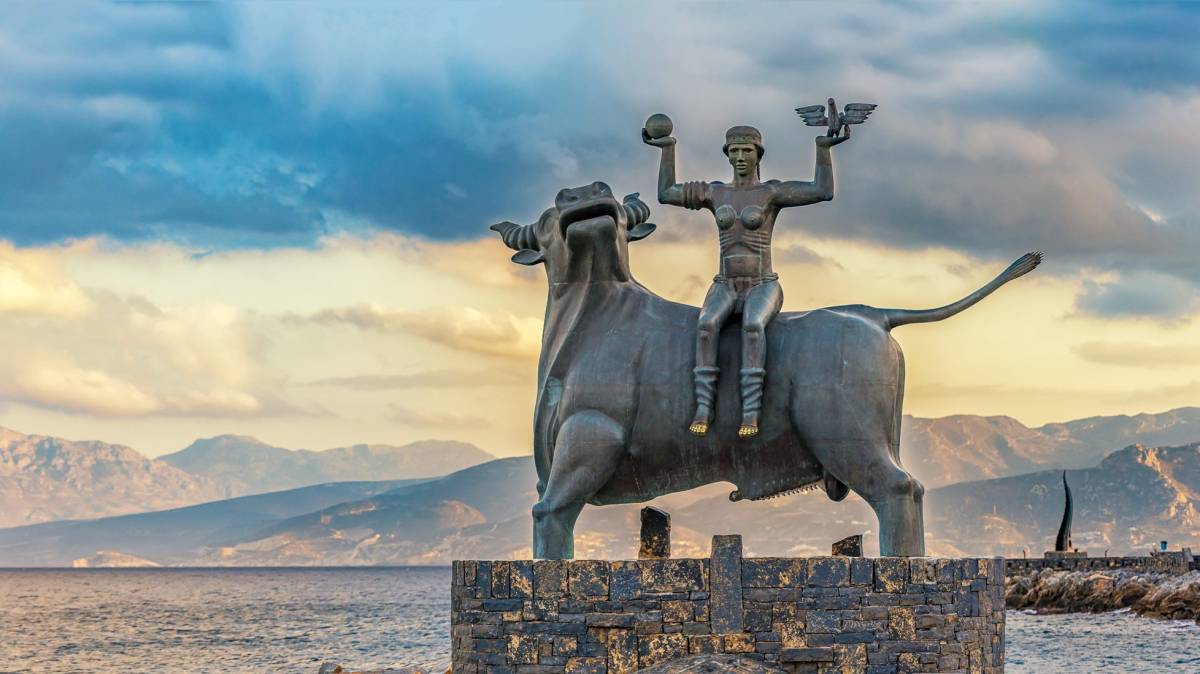
Europa was a very beautiful woman, daughter of the king of Phoenicia and lived on the coast of what is now known as Lebanon. One day she was picking flowers with her friends and Zeus passing by saw her and he was dazzled by her beauty. He transformed himself into a pure white bull and she, seeing how calm he was, climbed onto his back. He immediately fell into the sea and swam to Crete. They passed through Matala and Lenda beaches of Crete and ascended Mount Dikti where Zeus revealed his identity to her under a sacred plane tree.
Three sons were born from their union, Minos, Sarpidon and Rhodamanthuys. The first and the most powerful one became the King of Knossos and gave his name to the Minoan civilization, the great civilization that flourished on the island, Sarpidonas became the ruler of Malia and Rhodamanthys the Governor of Phaistos, in the south of Crete. Thus, Europe became the mother of the most ancient civilizations and gave her name to the entire continent.
Phoenicians were all the peoples of the Eastern Mediterranean who dealed with sea trade, transported exotic products and spoke unfamiliar languages. Their culture was of movement and change. Thus, in the myth, Zeus seems to have transported the ancient Eastern civilization to the Aegean, bringing new ideas and change. Kadmus, Europa's brother searching for his sister when Zeus took her, brought the Phoenician alphabet to the Greek people. The Latin and Cyrillic alphabets are adaptations of the Greek one. The name Europa in Greek means wide holes, i.e. big eyes, and thus Europa is the continent with a big, open and wide view. The myth of the Rapture of Europa expresses the free and restless spirit of the Europeans, the mobility, the meeting of their culture and the common heritage.
The timelessness of the myth of the rapture of Europa has inspired many artists from ancient times to the present day. There are representations of the myth in mosaics, ancient vases, coins, modern engravings, statues and paintings. A 4th BC mosaic in Sparta is depicted on the Greek 2€ coin. The statue of Nikos and Pantelis Sotiriadis is located at the entrance of the European Parliament in Strasbourg. A copy of it is located in the port of Agios Nikolaos in Crete. Many, still, statues adorn gardens in many large cities in Europe and America. In the 16th and 17th centuries, the most famous painters such as the Italian Tisiano, Petro Paulo Rubens and the Dutch Rembrandt depicted the legend.
(Μore articles about Crete on www.gomega.gr)